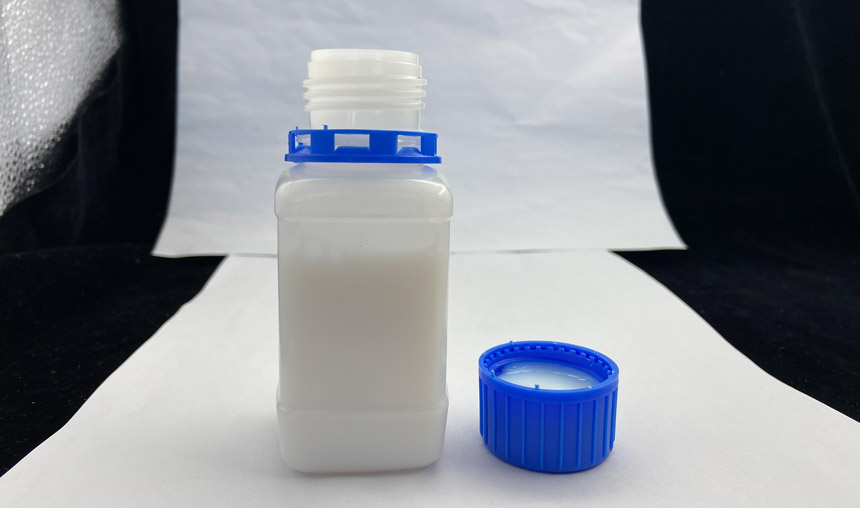In the paint industry, thickener is a crucial additive, whose presence has a non-negligible impact on the performance and construction effect of paints. This article will focus on the introduction of paint thickener, including its definition, types and core applications.
Index
1...... what is paint thickener
2...... Types of thickeners
3...... Characteristics of Thickener
4...... What do you use thickener for?
What is a paint thickener?
Paint thickener is also called coating thickener, paint thickening agent, or paint thickener. Paint thickener is a type of additive designed to increase the consistency and thickness of paint and improve its flow and adhesion. These additives are usually composed of cross-linked polymer emulsions containing acidic groups. When diluted with water and neutralized with alkali, the emulsion particles will expand rapidly, thus making the paint more viscous. The application of the thickener not only improves the physical properties of the paints, but also promotes its construction efficiency.
Types of thickeners
Paint thickeners can be mainly divided into the following categories according to the different chemical structures and functions:
1. inorganic thickeners:
1-1. The most commonly used is organic bentonite, whose main component is montmorillonite. This thickener because of its lamellar special structure, giving coatings strong pseudoplasticity, thixotropy, suspension stability and lubricity.
1-2. Disadvantages: poor flow and leveling performance, not easy to add dispersion.
2. cellulose class thickener:
2-1. Hydroxyethyl cellulose (HEC) is the representative of this category, with high efficiency thickening, good suspension, dispersion properties and water retention.
2-2. Disadvantages: affecting the water resistance of the paint, insufficient anti-mold performance, poor leveling performance.
3. Acrylic acid type thickener:
3-1. Acrylic alkali-swelling thickeners (ASE) and conjugated alkali-swelling thickeners (HASE) are the two main types. The former improves the viscosity of the aqueous phase through the homogeneous electrostatic repulsion between ions, while the latter introduces hydrophobic groups to enhance the viscosity of the emulsion phase.
3-2. Disadvantages: pH-sensitive, insufficient film flow and leveling, easy to thicken afterwards.
iSuoChem's TH-935D Paint thickener is an anionic hydrophobic modified alkali swelling thickening agent/additive. Its appearance is white liquid thickener. TH-935D is acrylic-based and can be used in water-based inks and coatings. In order to solve the common problems of acrylics, 935D has been optimized and modified in the formulation, with excellent film-forming properties and leveling properties, as well as excellent coating anti-roller splash performance.

Pic# TH-935D Paint thickener
4. Polyurethane type thickener:
4-1. polyurethane binding thickener (HEUR) through the formation of three-dimensional mesh structure to achieve thickening, with excellent flow and leveling properties, good thickening efficiency and viscosity storage stability.
4-2. Disadvantages: in the low viscosity system of the powder anti-settling effect is not good, the thickening effect is susceptible to dispersants and solvents and other influences.
Characteristics of Thickener
As an important additive in the paint/coating industry, the core use of the thickener is reflected in the following aspects.
1. Increase the viscosity of paints:
Thickeners can significantly increase the viscosity of paints, thereby controlling their fluidity and making it easier for paints to be evenly applied during construction.
2. increasing paint adhesion:
By increasing the adhesion of paints, thickeners enhance the adhesion and durability of paints, allowing paints to bond better to the substrate.
3. Improvement of coating coverage:
Paint thickeners increase the thickness of the coating, which makes it easier to cover original colors or imperfections, improving the hiding power and aesthetics of the paint.
4. Reduce the phenomenon of sagging and drooping:
When working on vertical walls, the paint thickener can effectively reduce the phenomenon of paint hanging and drooping, so that the paint adheres to the wall more firmly and improves the quality of construction.
5. Anti-settling and water separation:
By increasing the consistency of the paint, the thickener can effectively prevent the settling of solid particles such as pigments and fillers, as well as the water splitting phenomenon of the paint during the storage process, ensuring the stability and construction effect of the paint.
6. Improve the dispersion efficiency:
The paint thickener can also improve the dispersion effect of each component in the paints to ensure that the coating reaches an ideal uniform state before construction.
What do you use thickener for? (What else are thickeners used for besides paint thickeners?)
In addition to conventional paints, thickeners can also be used in Inks, Paper Handling/Finishing, Textiles and Construction paint.
As an important part of paint formula thickener, paint thickening agent plays a vital role in improving paint performance and construction effect. Through the reasonable selection and addition of paint thickeners, the comprehensive quality of paints can be significantly improved to meet the diversified construction needs!